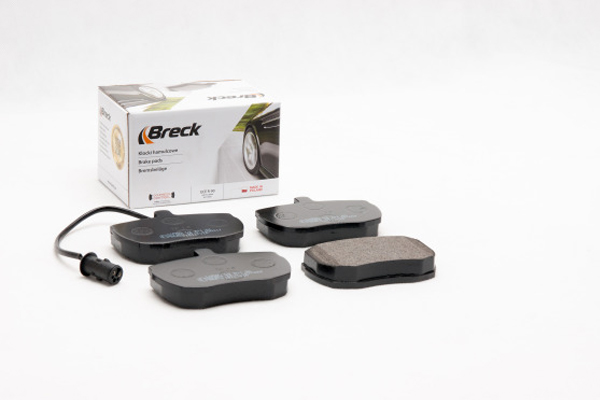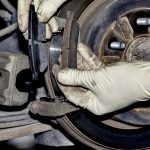Lumag tell-tale signs of brake pad problems.
Brake Pads
Issue: Separation of the friction material.
Cause: Using pads without an underlayer or with low mechanical strength.
Issue: Damaged (bent) back plate.
Cause: Faulty pad installation; uneven wear of pads in a single caliper or the seizure of a pad in the caliper yoke/plate resulting from corrosion, for example.
Issue: Dirty pad, soaked with oil, grease or brake fluid. Cause: May occur if a service technician doesn’t handle the part with sufficient caution during installation. The pad can also get dirty from a braking fluid leak or grease from a bearing.
Issue: ‘Vitrification’ of the friction material.
Cause: Continuous braking with very hot brakes or pads which are made of an improper friction material.

Issue: Excessive pad wear.
Cause: The failure to properly inspect a vehicle’s braking system during routine maintenance checks or low quality of the friction material.
Issue: Cracked friction material.
Cause: Bending of the brake pad caused by seizure in the caliper yoke, or possibly low mechanical strength in high temperatures.
Issue: Charring of the friction material caused by extreme heat (pad ‘burning’).
Cause: Excessive braking, overheating the pads and racing at unusually high speed.
Issue: Uneven pad wear caused by improper interaction with the disc.
Cause: Excessive brake disc wear.
Issue: Irregular wear (diagonal wearing out of the material).
Cause: Cuts on the caliper’s sliding surfaces and excessive caliper play.
Issue: Excessive corrosion.
Cause: Pads made of low quality materials. Corrosion may also damage pads in cars stored in a corrosive environment after a long period of disuse.
Braking
Issue: Stick-slip.
Cause: When static friction exceeds kinetic friction. As a result, the pad and disc surfaces disconnect and start to ‘slip’. This lasts until both surfaces ‘stick’ back together.
Issue: Squeaks of various frequencies.
Cause: Low-frequency squeaks (1 to ~3kHz) are generated by, for example, rods, calipers and yokes, as a result of play between various linkage components. On the other hand, medium and high-frequency squeaks (4 to ~16kHz) are generated by discs and pads. The cause of vibration coming from the pad is mainly a change in its friction coefficient and improper geometry of the friction material. In the case of discs, the causes are deviations in disc thickness (DTV), hot spots and improper cast iron.
Issue: Groan and moan.
Cause: The vehicle starts moving when the speed of up to 2rpm is reached and when the pressure in the system is low. It is a series of fluctuations caused by sticking and slipping of the pad and the disc. Possible causes of groaning include deformation of discs and pads, transfer of the friction material to the disc surface and variation of the friction coefficient.
Issue: Judder.
Cause: Changes in the braking torque. Judders can be subdivided into a number of groups, according to their cause:
■ Hot judder – when the disc temperature is higher than 200°C.
■ Cold judder – when the disc temperature is less than 100°C.
■ High velocity judder – when speeds reach over 80 mph.
■ ‘Green’ judder – with newly-installed discs and pads during braking-in, which shows a good initial braking performance.










